|
|
| Пишет marinni ( @ 2009-06-10 19:30:00 |
|
|
|
|
|
|
|
|
|
|
|
|
|
|
Алхимия. Старинные гравюры.

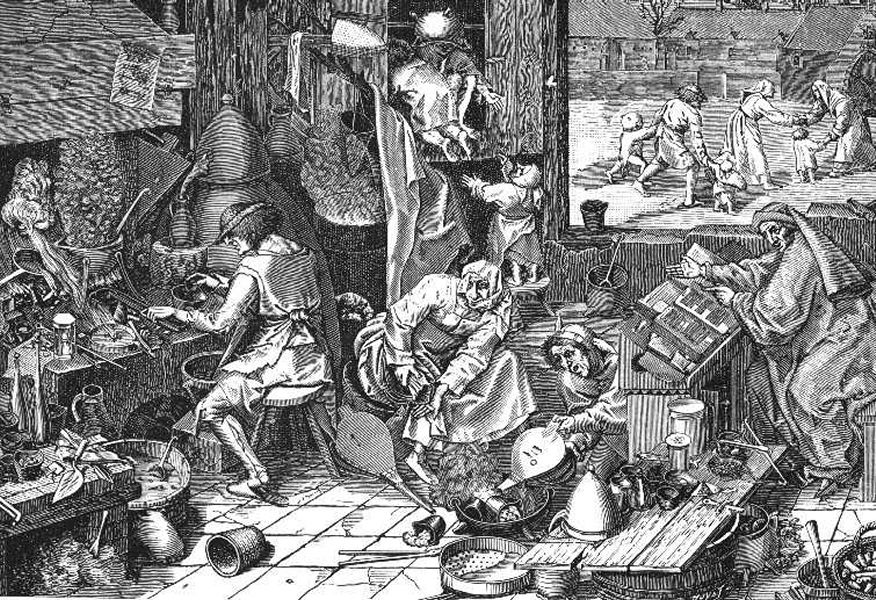
Pieter Brueghel the Elder (1525-1569) An Alchemist at work, mid 16th cent
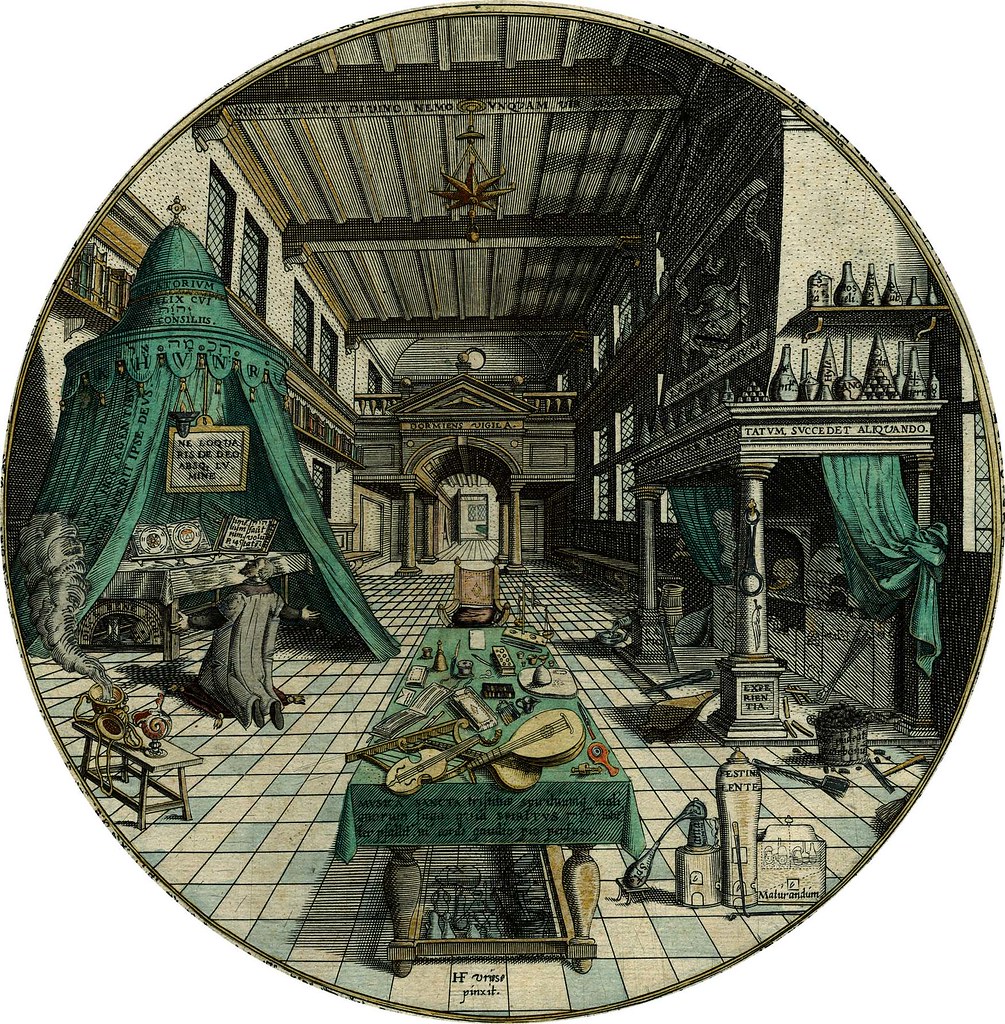
Alchemist's Laboratory (Khunrath)
Alchemist's Laboratory IN: 'Amphitheatrum Sapientiae Aeternae' by Heinrich Khunrath, 1595.
[A]n alchemical classic, the best known of Heinrich Khunrath's works. The work is infused with a strange combination of Christianity and magic, illustrated with elaborate, hand-colored, engraved plates heightened with gold and silver. The tension between spirituality and experiment, and the rich symbolism of Khunrath's writings and their engravings brought condemnation of the book by the Sorbonne in 1625, and now attracts attention from scholars."
О КНИГЕ:http://specialcollections.library.w

Sebastian Brandt
Narrenschiff 'Ship of fools',1494.

Hans Weiditz
Hans Weiditz (fl. early 16th century) An Alchemist, c. 1520.
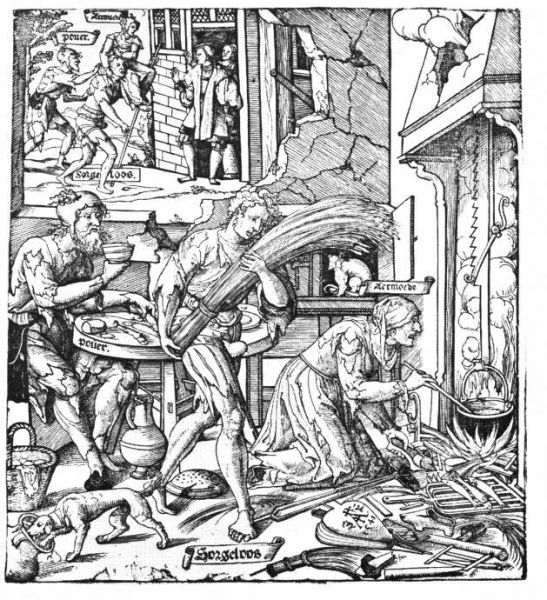
Woodcut by Cornelis A. Teunissen, 1541

An emblem that came to be known as the 'Twelfth Key of Basil Valentine' first appeared in a book from 1599, 'Ein kurtz summarischer Tractat' (Basilius Valentinus). The version above ('clavis' = key) appeared in Michael Maier's 'Tripus Aureus', published by Theodore de Bry in 1622.
In vague and basic terms: as the lion transforms the serpent into its own flesh when he devours it, so the philosopher's stone has the power to transmute or transform all imperfect metals into gold; but pure gold is required as one of the ingredients. Ahh, but how does one create the philosopher's stone? That is the eternal question..
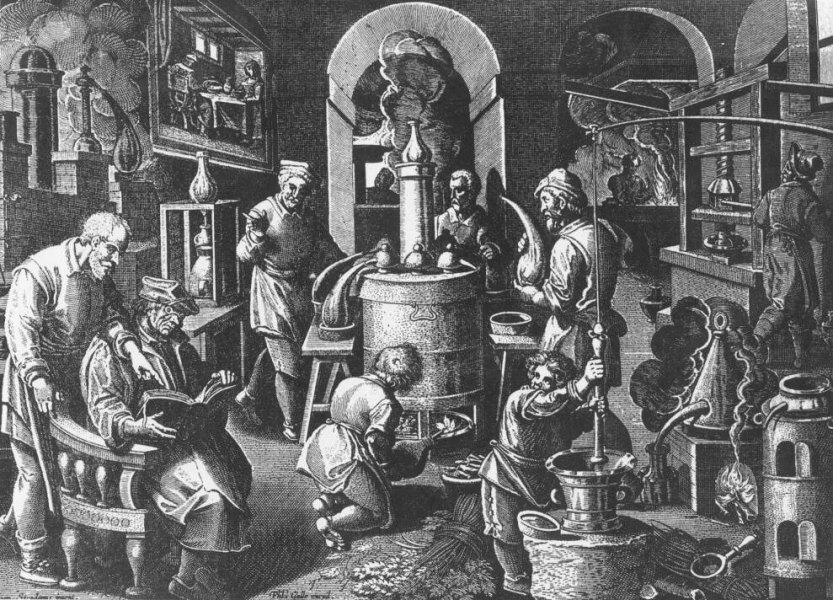

Дистилляция.
'Distillatio' by Jan van der Straet, originally published in his 'Nova Reperta' series from the 1580s, as reviewed previously in Renaissance Discoveries and Inventions].

'The second Booke of Distillations, containing Sundrie
excellent Secret remedies of Distilled Waters'
Anonymous woodcut illustration of alchemist in his laboratory IN: 'The Practise of the New and Old Phisicke' by Conrad Gesner, 1599.
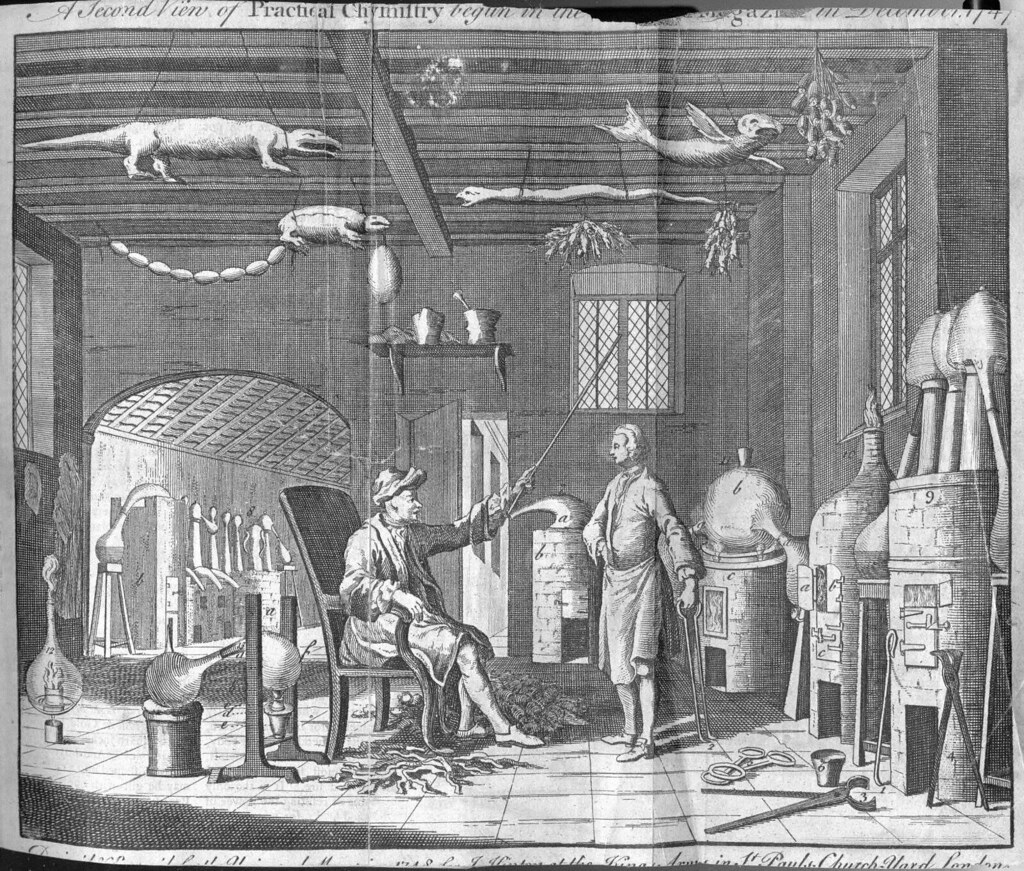
'A Second View of Practical Chymistry' IN: 'The Universal Magazine' [vol. 2], 1748.
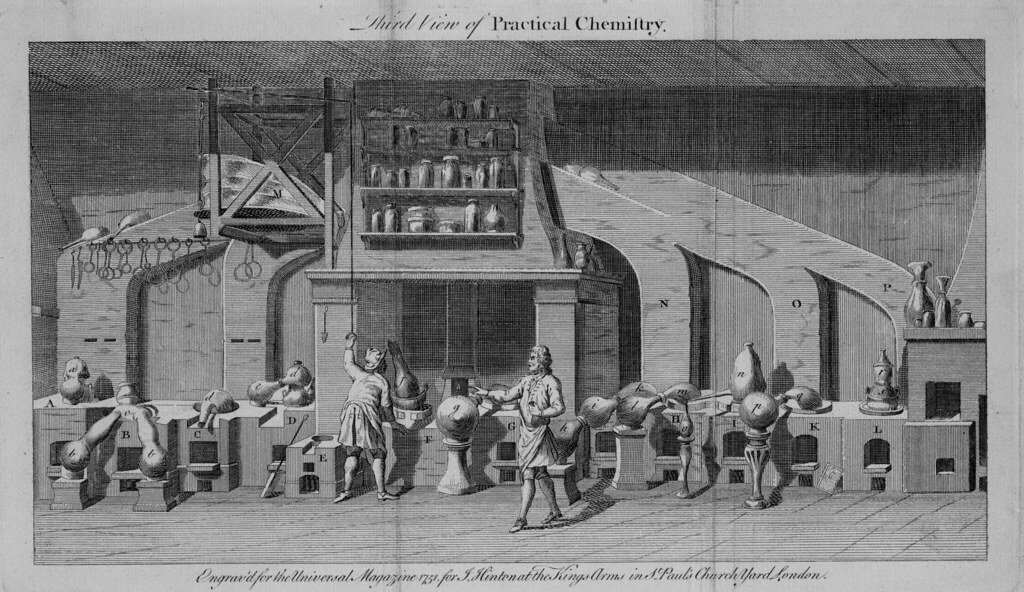
Third View of Practical Chemistry 1751.
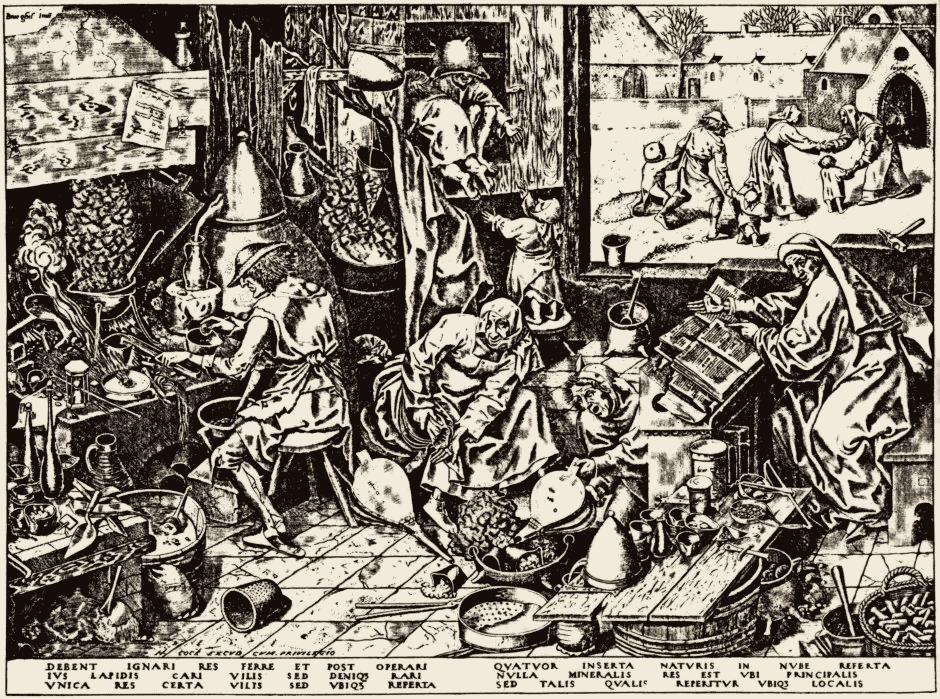
The Alchemist - Pieter Bruegel the Elder, 1558

Facies Interna Laboratorium Academici Traiectini 1698
(Interior View of a Laboratory at the University of Utrecht)
IN: 'Pyrosophia, Succinte atque Breviter Iatro-Chemiam, rem Metallicam et Chrysopoeiam Pervestigans' by Johann Conrad Barchusen, 1698.
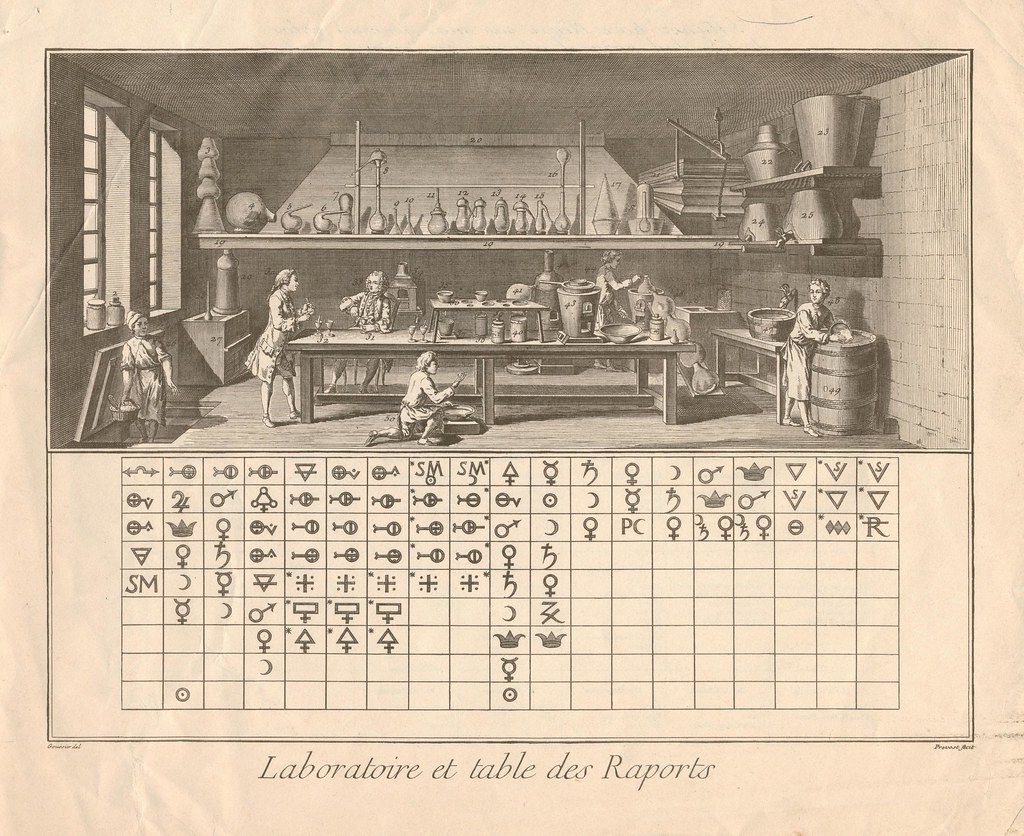
Laboratoire et table des Raports - after 1772
Artist: Louis-Jacques Goussier Engraver: Benoît Louis Prévost
IN: 'Recueil de Planches, sur les Sciences, les Arts Libéraux, et les Arts Méchaniques', 1772. {an earlier version appeared in Diderot's 'L'Encyclopédie', 1751-1765}

L'alchimiste (after) 1769
Original painting by David Teniers (before 1690).
This version engraved by Jacques-Louis Pérée, 1769.

'Le Chimiste
De la Galerie de S.A.S. Monseigneur le Duc d'Orléans'
Original painting by David Teniers (before 1690). This version engraved by FB Lorieux sometime in the 1700s. "Alembic and crucible sit on furnace in center of image; miscellaneous apparatus in foreground."
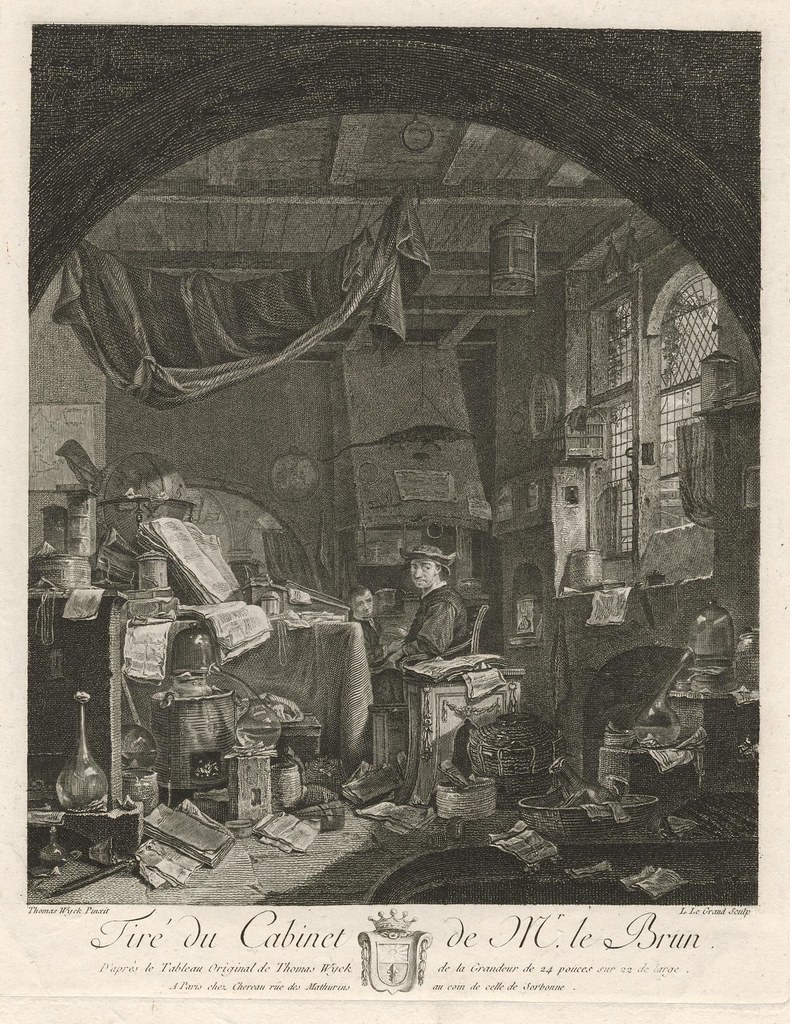
'Tiré du Cabinet de Mr. le Brun'
Original painting by Thomas Wyck. This version engraved by Louis-Claude Le Grand sometime in the 1700s.
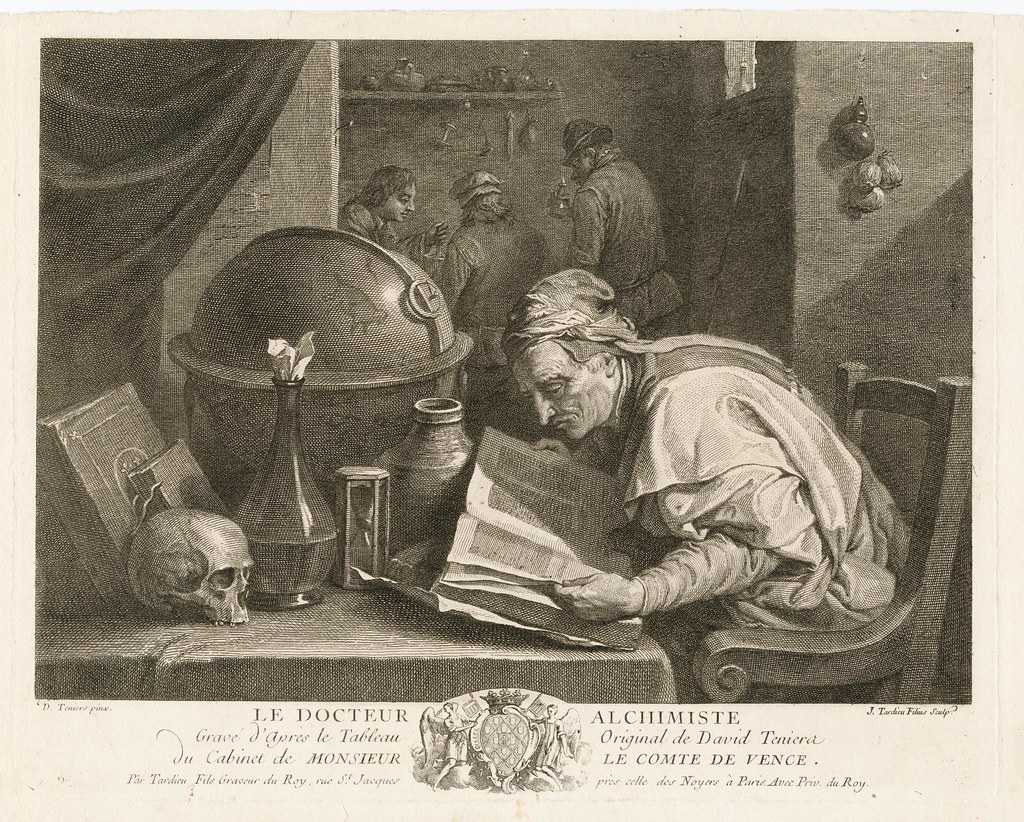
Le Docteur Alchimiste (18th cent.)
Original painting by David Teniers (before 1690). This version engraved by Jacques Nicolas Tardieu sometime in the 1700s.
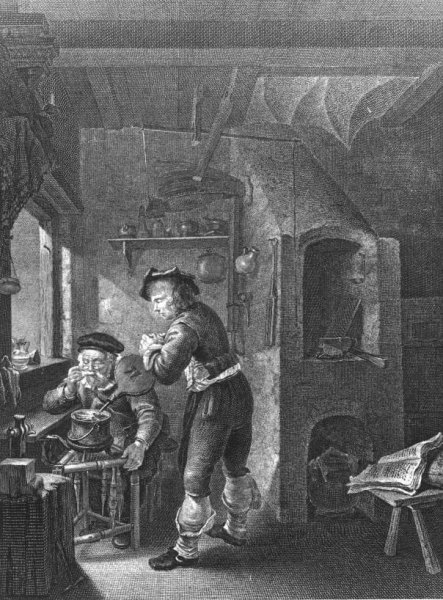
F. van Mieris
Copperplate engraving from 1675 from a painting by F. van Mieris.
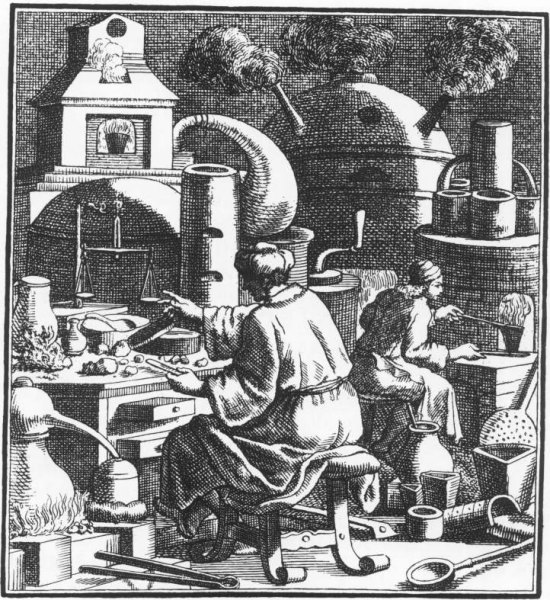
Engraving of goldmakers from 1698 - золотоделатели.
"The Alchemist. Three deformed figures, whole length standing, the middle one wearing glasses and a large hat, heating up liquids in chemical bottles over a stove, the right figure carrying a basket with charcoal."
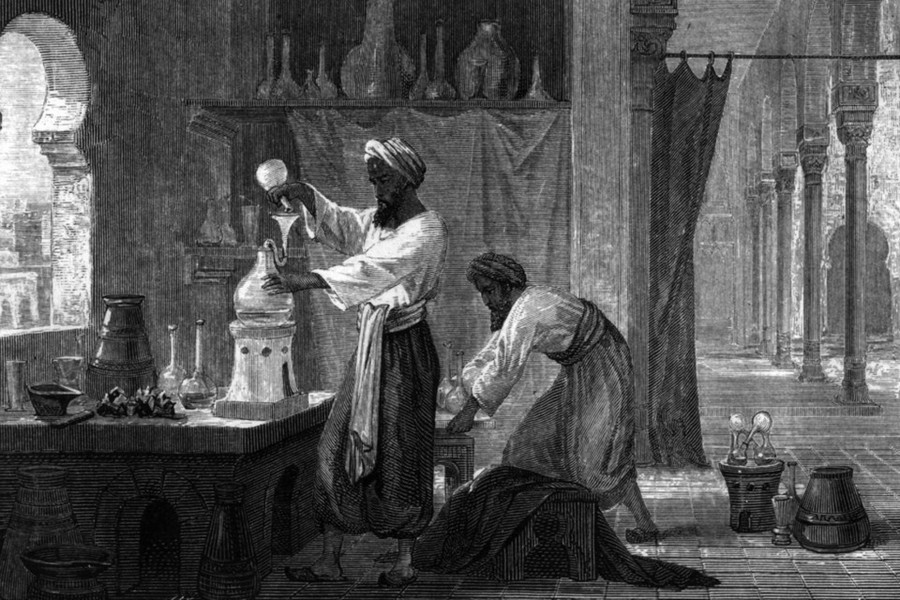
Rhases in his laboratory
19th century engraving showing Rhases in his laboratory
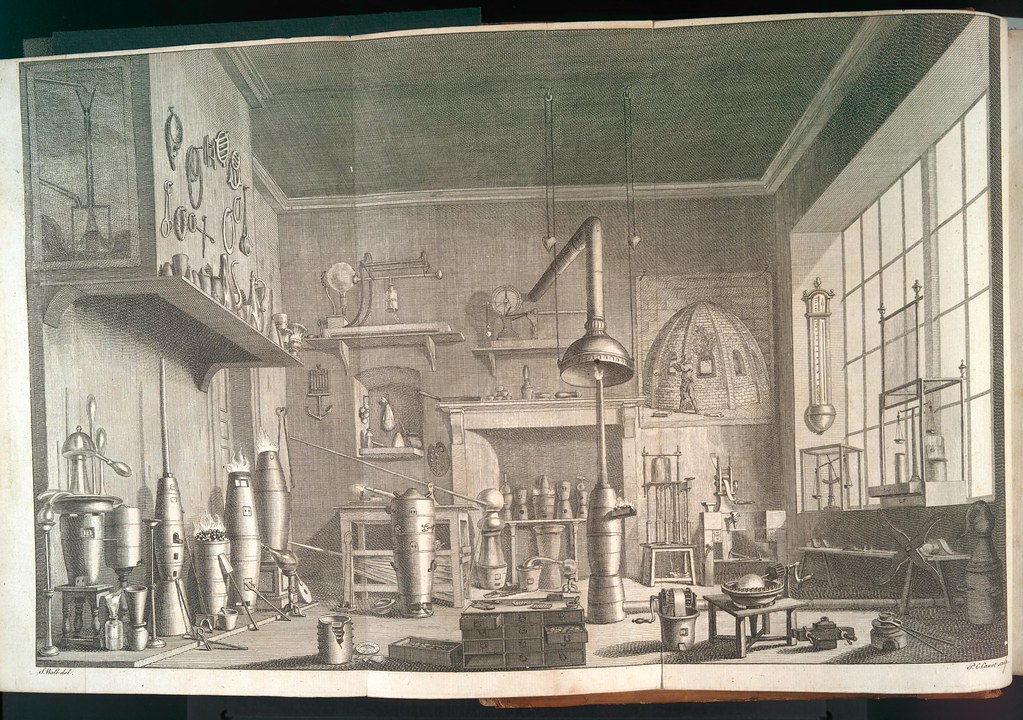
'Laboratory for metallurgy and the industrial arts'
Original painting by Samuel Wale. This version engraved by Pierre-Charles Canot, 1765. The illustration appeared IN: 'Commercium Philosophico-Technicum' (The Philosophical Commerce of Arts) by William Lewis.
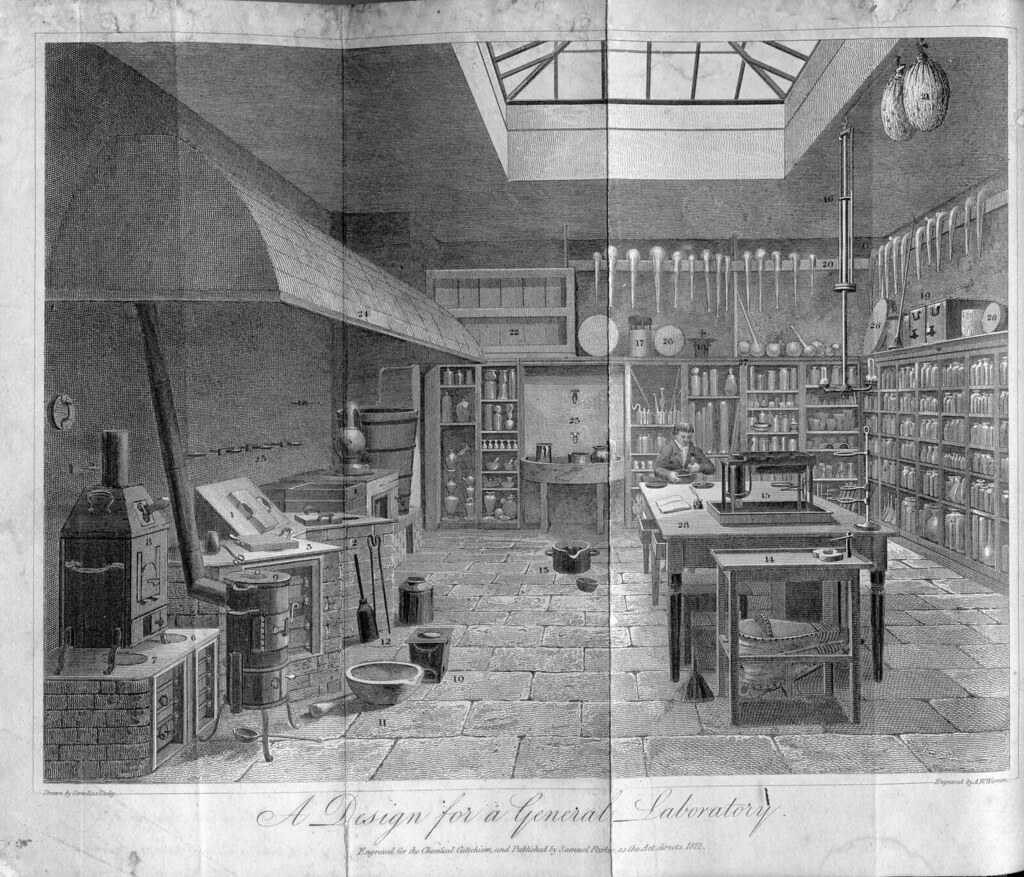
'A Design for a General Laboratory'
Artist: Cornelius Varley; Engraver: AW Warren, 1822.
This illustration formed the frontispiece of the 10th Ed. of 'The Chemical Catechism' by Samuel Parkes (probably in the 1860s/1870s).
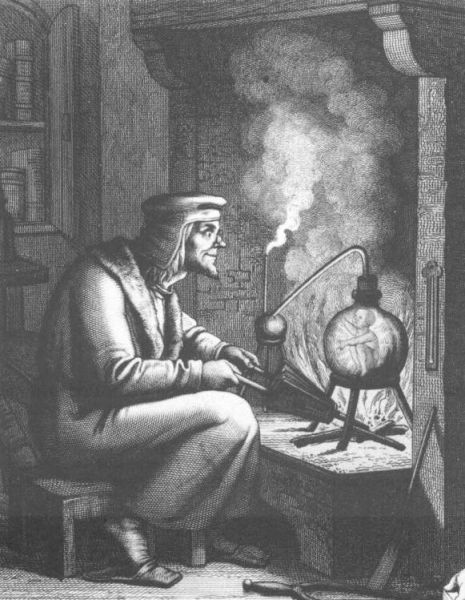
Faust and Homunculus
19th century engraving of Goethe's Faust and Homunculus
КАРИКАТУРЫ
--------------------------------------
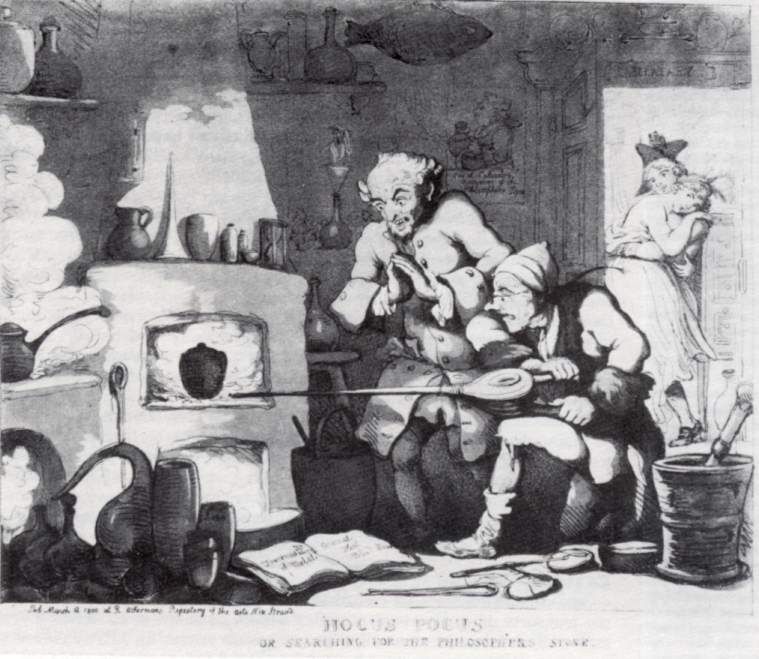
Hocus pocus
Satirical English print of 1800
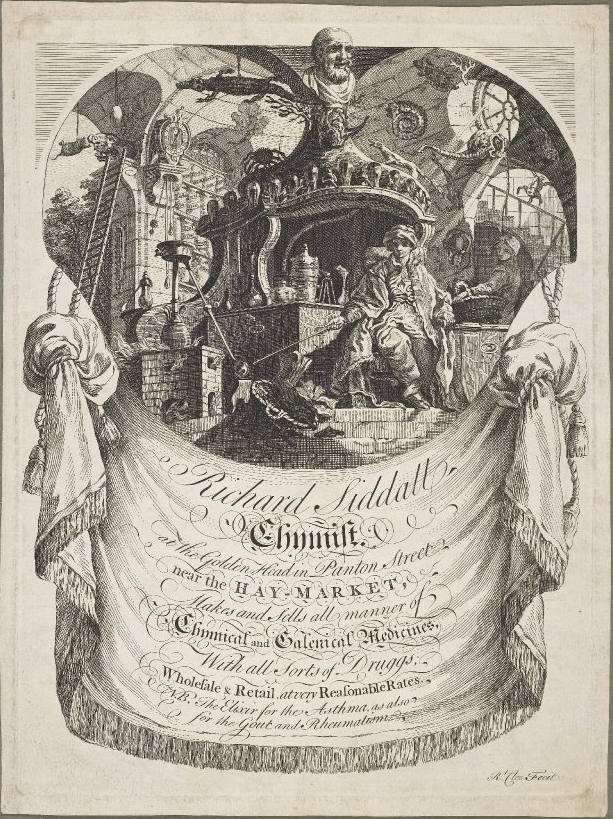
Trade card of Richard Siddall, chemist at the Golden Head in Panton Street
The card, etched/engraved by Robert Clee in about the 1750s "is based on a painting entitled 'La Pharmacie', one of a series by Jacques de Lajoue made for the Duc de Picquigny in 1735 and known in London from a print of 1738 by Charles Nicolas Cochin

'Le Plaisir des Fous'
(The pleasure of fools)
Original painting by David Teniers (before 1690). This version engraved by Pierre-François Basan sometime in the 1700s. This satirical view of an alchemist shows that not all illustrations were meant to be taken too seriously
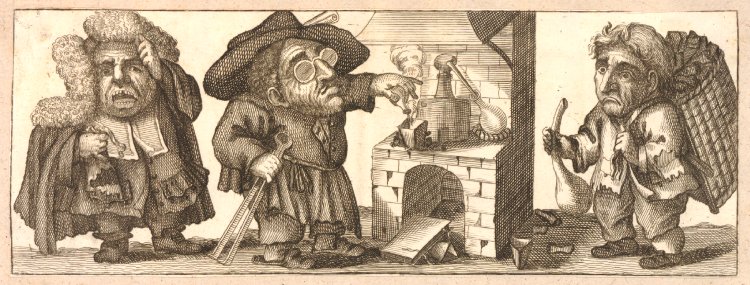
'Raccolta di Diverse Caricature'
(Collection of diverse caricatures)
Print made by Arnold van Westerhout, 1687.
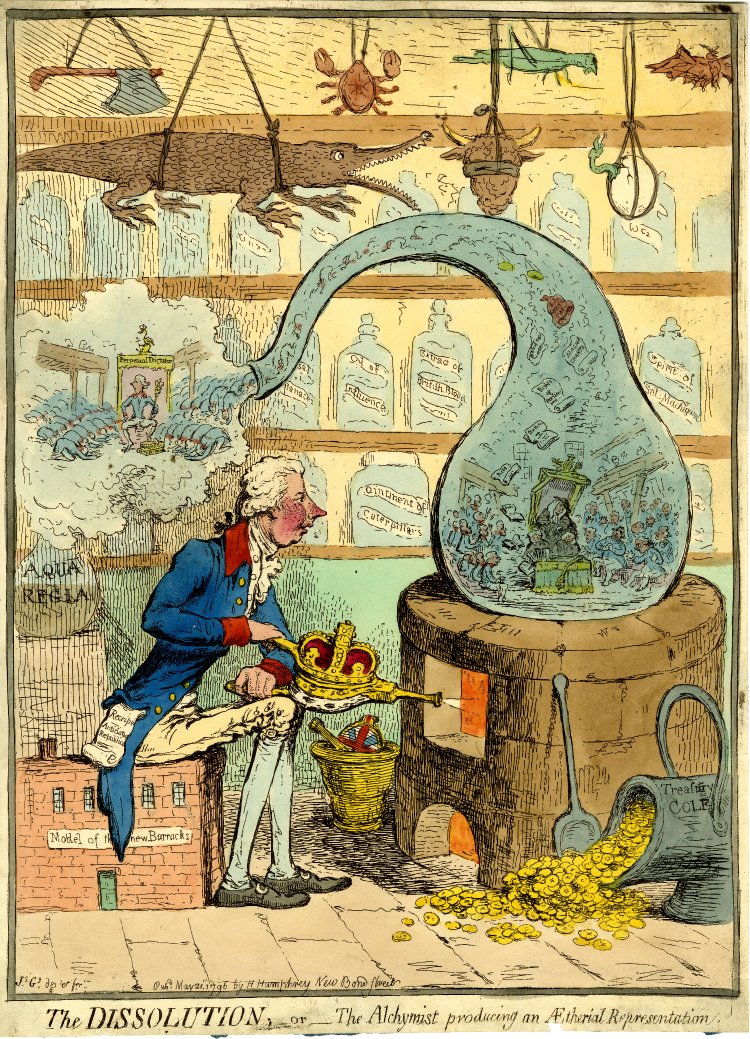
'The Dissolution, or The Alchymist producing an Aetherial Representation'
Hand-coloured etching made by James Gillray, 1796, in reference to the dissolution of Parliament announced on 19 May.

'La Chimie'
Alchemy laboratory, with alembic* at centre, and, at right, four putti* gathered around a crucible; at left, a putto carrying coal in a basket. Engraved by Bernard Picart IN Bernard de Fontenelle's 'Oeuvres Diverses', 1729.
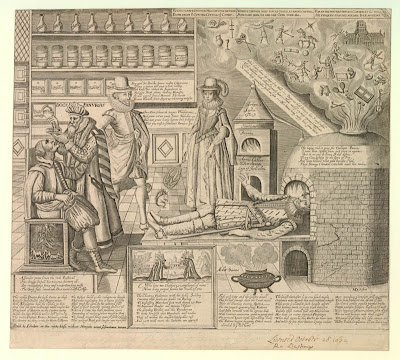

'Doctor Panurgus', engraving by Martin Droeshout ~1620s.
ЕЩЕ ГРАВЮРЫ из КНИГ ПО АЛХИМИИ и КАБАЛЕ.

Collectanea chymica Leidensia by Christopher Love Morley, Theodorus Muyckens, 1700 (dresden)
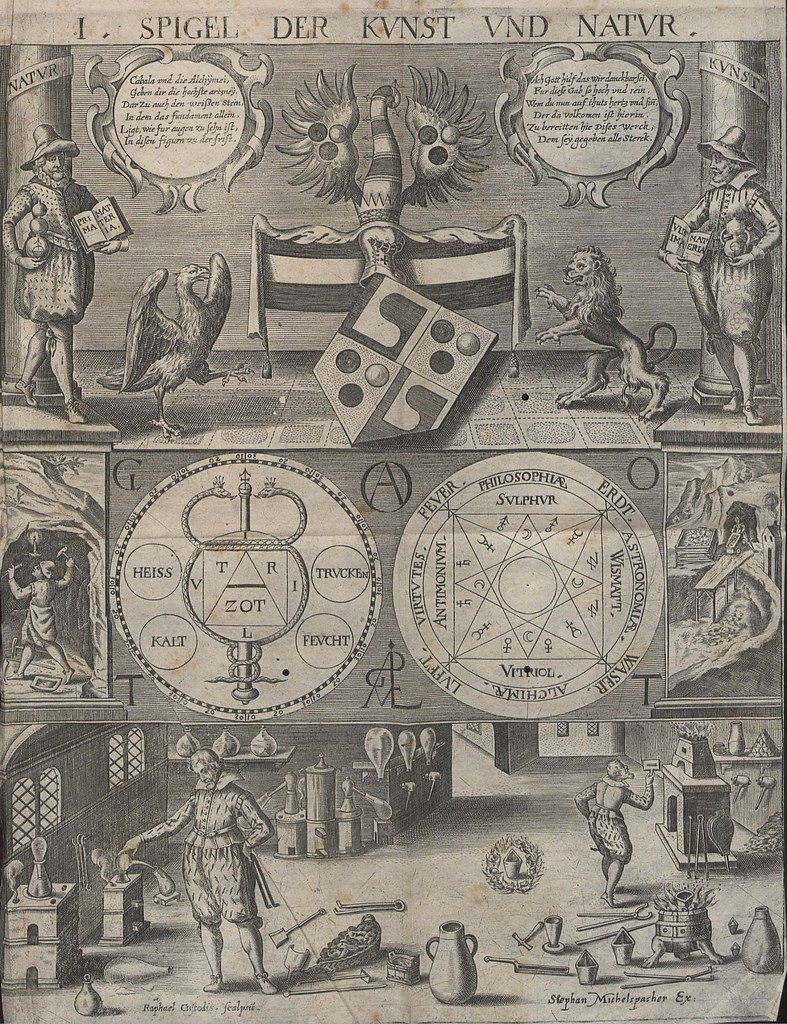
Cabala, Speculum Artis Et Naturae In Alchymia by Stephan Michelspacher (1654) (dresden)

Cabala, Speculum Artis Et Naturae In Alchymia by Stephan Michelspacher (1654) (dresden) b
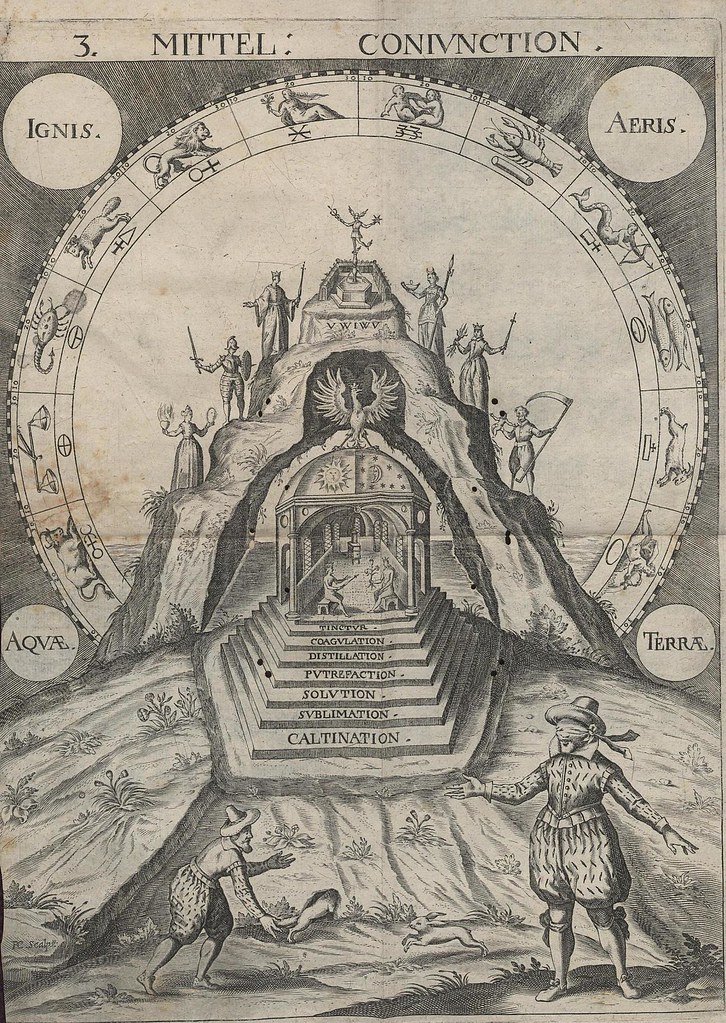
Cabala, Speculum Artis Et Naturae In Alchymia by Stephan Michelspacher (1654) (dresden)
Википедия об алхимии:http://ru.wikipedia.org/wiki/%D
http://bibliodyssey.blogspot.com/2008/1
http://www.flickr.com/photos/bibliodyss
Алхимия. Старинные гравюры.


Pieter Brueghel the Elder (1525-1569) An Alchemist at work, mid 16th cent

Alchemist's Laboratory (Khunrath)
Alchemist's Laboratory IN: 'Amphitheatrum Sapientiae Aeternae' by Heinrich Khunrath, 1595.
[A]n alchemical classic, the best known of Heinrich Khunrath's works. The work is infused with a strange combination of Christianity and magic, illustrated with elaborate, hand-colored, engraved plates heightened with gold and silver. The tension between spirituality and experiment, and the rich symbolism of Khunrath's writings and their engravings brought condemnation of the book by the Sorbonne in 1625, and now attracts attention from scholars."
О КНИГЕ:http://specialcollections.library.w

Sebastian Brandt
Narrenschiff 'Ship of fools',1494.

Hans Weiditz
Hans Weiditz (fl. early 16th century) An Alchemist, c. 1520.

Woodcut by Cornelis A. Teunissen, 1541

An emblem that came to be known as the 'Twelfth Key of Basil Valentine' first appeared in a book from 1599, 'Ein kurtz summarischer Tractat' (Basilius Valentinus). The version above ('clavis' = key) appeared in Michael Maier's 'Tripus Aureus', published by Theodore de Bry in 1622.
In vague and basic terms: as the lion transforms the serpent into its own flesh when he devours it, so the philosopher's stone has the power to transmute or transform all imperfect metals into gold; but pure gold is required as one of the ingredients. Ahh, but how does one create the philosopher's stone? That is the eternal question..


Дистилляция.
'Distillatio' by Jan van der Straet, originally published in his 'Nova Reperta' series from the 1580s, as reviewed previously in Renaissance Discoveries and Inventions].

'The second Booke of Distillations, containing Sundrie
excellent Secret remedies of Distilled Waters'
Anonymous woodcut illustration of alchemist in his laboratory IN: 'The Practise of the New and Old Phisicke' by Conrad Gesner, 1599.

'A Second View of Practical Chymistry' IN: 'The Universal Magazine' [vol. 2], 1748.

Third View of Practical Chemistry 1751.

The Alchemist - Pieter Bruegel the Elder, 1558

Facies Interna Laboratorium Academici Traiectini 1698
(Interior View of a Laboratory at the University of Utrecht)
IN: 'Pyrosophia, Succinte atque Breviter Iatro-Chemiam, rem Metallicam et Chrysopoeiam Pervestigans' by Johann Conrad Barchusen, 1698.

Laboratoire et table des Raports - after 1772
Artist: Louis-Jacques Goussier Engraver: Benoît Louis Prévost
IN: 'Recueil de Planches, sur les Sciences, les Arts Libéraux, et les Arts Méchaniques', 1772. {an earlier version appeared in Diderot's 'L'Encyclopédie', 1751-1765}

L'alchimiste (after) 1769
Original painting by David Teniers (before 1690).
This version engraved by Jacques-Louis Pérée, 1769.

'Le Chimiste
De la Galerie de S.A.S. Monseigneur le Duc d'Orléans'
Original painting by David Teniers (before 1690). This version engraved by FB Lorieux sometime in the 1700s. "Alembic and crucible sit on furnace in center of image; miscellaneous apparatus in foreground."

'Tiré du Cabinet de Mr. le Brun'
Original painting by Thomas Wyck. This version engraved by Louis-Claude Le Grand sometime in the 1700s.

Le Docteur Alchimiste (18th cent.)
Original painting by David Teniers (before 1690). This version engraved by Jacques Nicolas Tardieu sometime in the 1700s.

F. van Mieris
Copperplate engraving from 1675 from a painting by F. van Mieris.

Engraving of goldmakers from 1698 - золотоделатели.
"The Alchemist. Three deformed figures, whole length standing, the middle one wearing glasses and a large hat, heating up liquids in chemical bottles over a stove, the right figure carrying a basket with charcoal."

Rhases in his laboratory
19th century engraving showing Rhases in his laboratory

'Laboratory for metallurgy and the industrial arts'
Original painting by Samuel Wale. This version engraved by Pierre-Charles Canot, 1765. The illustration appeared IN: 'Commercium Philosophico-Technicum' (The Philosophical Commerce of Arts) by William Lewis.

'A Design for a General Laboratory'
Artist: Cornelius Varley; Engraver: AW Warren, 1822.
This illustration formed the frontispiece of the 10th Ed. of 'The Chemical Catechism' by Samuel Parkes (probably in the 1860s/1870s).

Faust and Homunculus
19th century engraving of Goethe's Faust and Homunculus
КАРИКАТУРЫ
--------------------------------------

Hocus pocus
Satirical English print of 1800

Trade card of Richard Siddall, chemist at the Golden Head in Panton Street
The card, etched/engraved by Robert Clee in about the 1750s "is based on a painting entitled 'La Pharmacie', one of a series by Jacques de Lajoue made for the Duc de Picquigny in 1735 and known in London from a print of 1738 by Charles Nicolas Cochin

'Le Plaisir des Fous'
(The pleasure of fools)
Original painting by David Teniers (before 1690). This version engraved by Pierre-François Basan sometime in the 1700s. This satirical view of an alchemist shows that not all illustrations were meant to be taken too seriously

'Raccolta di Diverse Caricature'
(Collection of diverse caricatures)
Print made by Arnold van Westerhout, 1687.

'The Dissolution, or The Alchymist producing an Aetherial Representation'
Hand-coloured etching made by James Gillray, 1796, in reference to the dissolution of Parliament announced on 19 May.

'La Chimie'
Alchemy laboratory, with alembic* at centre, and, at right, four putti* gathered around a crucible; at left, a putto carrying coal in a basket. Engraved by Bernard Picart IN Bernard de Fontenelle's 'Oeuvres Diverses', 1729.


'Doctor Panurgus', engraving by Martin Droeshout ~1620s.
ЕЩЕ ГРАВЮРЫ из КНИГ ПО АЛХИМИИ и КАБАЛЕ.

Collectanea chymica Leidensia by Christopher Love Morley, Theodorus Muyckens, 1700 (dresden)

Cabala, Speculum Artis Et Naturae In Alchymia by Stephan Michelspacher (1654) (dresden)

Cabala, Speculum Artis Et Naturae In Alchymia by Stephan Michelspacher (1654) (dresden) b

Cabala, Speculum Artis Et Naturae In Alchymia by Stephan Michelspacher (1654) (dresden)
Википедия об алхимии:http://ru.wikipedia.org/wiki/%D
http://bibliodyssey.blogspot.com/2008/1
http://www.flickr.com/photos/bibliodyss
Добавить комментарий: